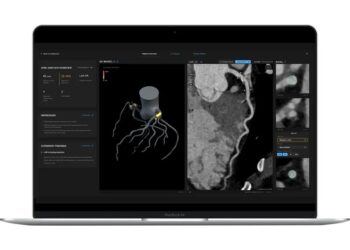### Beyond Monolithic Models: Why Mixture of Experts is Reshaping AI Efficiency
For the last several years, the story of large language models (LLMs) has been one of brute force: bigger is better. We’ve witnessed a relentless race to scale, piling billions more parameters into models with each generation, chasing benchmark leadership. This approach has yielded incredible capabilities, but it has also led us to a computational cliff. The energy and hardware costs of training and running these monolithic “dense” models—where every single parameter is activated to process every single token—are becoming unsustainable.
This is where a more elegant architectural paradigm, the Mixture of Experts (MoE), is proving to be a game-changer. MoE isn’t a new concept, but its recent successful implementation in models like Mixtral 8x7B represents a pivotal shift from brute-force computation to intelligent, conditional computation. It’s a move from making the entire brain work on every problem to routing tasks to the most relevant specialists.
—
### The Anatomy of an MoE Model
At its core, a dense transformer model processes information through a series of identical blocks, each containing self-attention and feed-forward network (FFN) layers. In a monolithic model, the FFN layer is a single, massive neural network. Every token passing through that block is processed by this same FFN, activating all of its parameters.
An MoE model fundamentally redesigns this FFN layer. Instead of one large network, it consists of two key components:
1. **A Set of “Expert” Networks:** These are multiple, smaller FFNs that exist in parallel. Each expert can be thought of as a specialist, potentially developing a latent proficiency for certain types of patterns, concepts, or linguistic structures. In the case of Mixtral 8x7B, there are 8 distinct experts within each MoE layer.
2. **A Gating Network (or “Router”):** This is a small, lightweight neural network that sits in front of the experts. Its critical job is to look at each incoming token and dynamically decide which experts are best suited to process it. It doesn’t make a hard decision; rather, it outputs a weighted combination, typically instructing the model to engage a small subset of the top-k experts (for Mixtral, k=2).
The magic happens in how these components interact. For every token that enters the MoE layer, the router selects, for example, the best two out of the eight available experts. The token is processed only by those two selected experts, and their outputs are then combined based on the weights assigned by the router. All other experts in that layer remain dormant for that specific token.
### The Power of Sparse Activation
This process is called **sparse activation**, and it’s the source of MoE’s incredible efficiency. Consider the numbers: Mixtral 8x7B has a total of roughly 47 billion parameters across its eight experts. However, during inference, it only activates the parameters for two experts at a time, resulting in the use of only about 13 billion active parameters per token.
This provides the best of both worlds:
* **Knowledge Capacity of a Large Model:** The model benefits from the representational power of its total parameter count (47B), as this vast repository of knowledge is available for the router to select from.
* **Inference Speed of a Small Model:** The actual computational cost (FLOPs) for processing a token is equivalent to that of a much smaller 13B dense model, because only that many parameters are engaged in the calculation.
This is precisely why Mixtral 8x7B can deliver performance comparable to or exceeding that of a 70-billion-parameter dense model like Llama 2 70B, but with significantly faster inference speeds and lower deployment costs.
### Challenges and The Road Ahead
Of course, this efficiency comes with its own set of technical trade-offs. Training MoE models is notoriously complex. A key challenge is ensuring “load balancing”—the router must be trained to distribute tokens effectively across all experts. If the router develops a bias and consistently picks the same few “favorite” experts, the others become useless, and the model’s capacity is wasted. Sophisticated loss functions are required to encourage a balanced routing strategy.
Furthermore, while the *computational* cost of inference is low, the *memory* footprint is not. To run an MoE model, you still need to load all of its experts into VRAM. A 47B parameter model still requires the memory of a 47B model, even if you’re only using a fraction of it at any given moment.
### Conclusion: A Smarter Path Forward
Despite these challenges, the Mixture of Experts architecture marks a crucial evolution in AI. It signals a move away from the unsustainable “bigger is always better” scaling philosophy and towards a more nuanced, efficient, and biologically plausible approach. By enabling conditional computation, MoE allows us to build models that are simultaneously more powerful and more practical to deploy. This isn’t just an incremental improvement; it’s a foundational shift that will pave the way for the next generation of capable and accessible artificial intelligence.
This post is based on the original article at https://techcrunch.com/2025/09/13/xai-reportedly-lays-off-500-workers-from-data-annotation-team/.






















